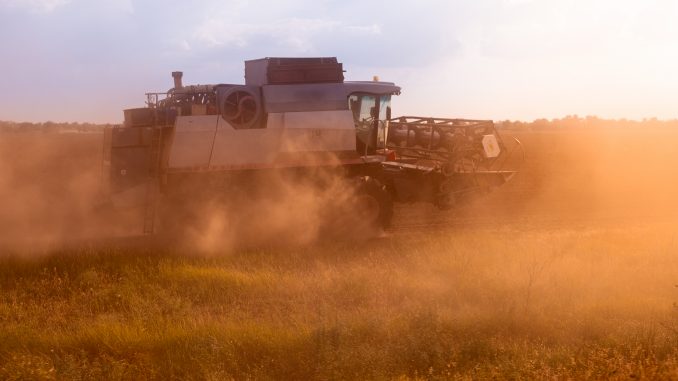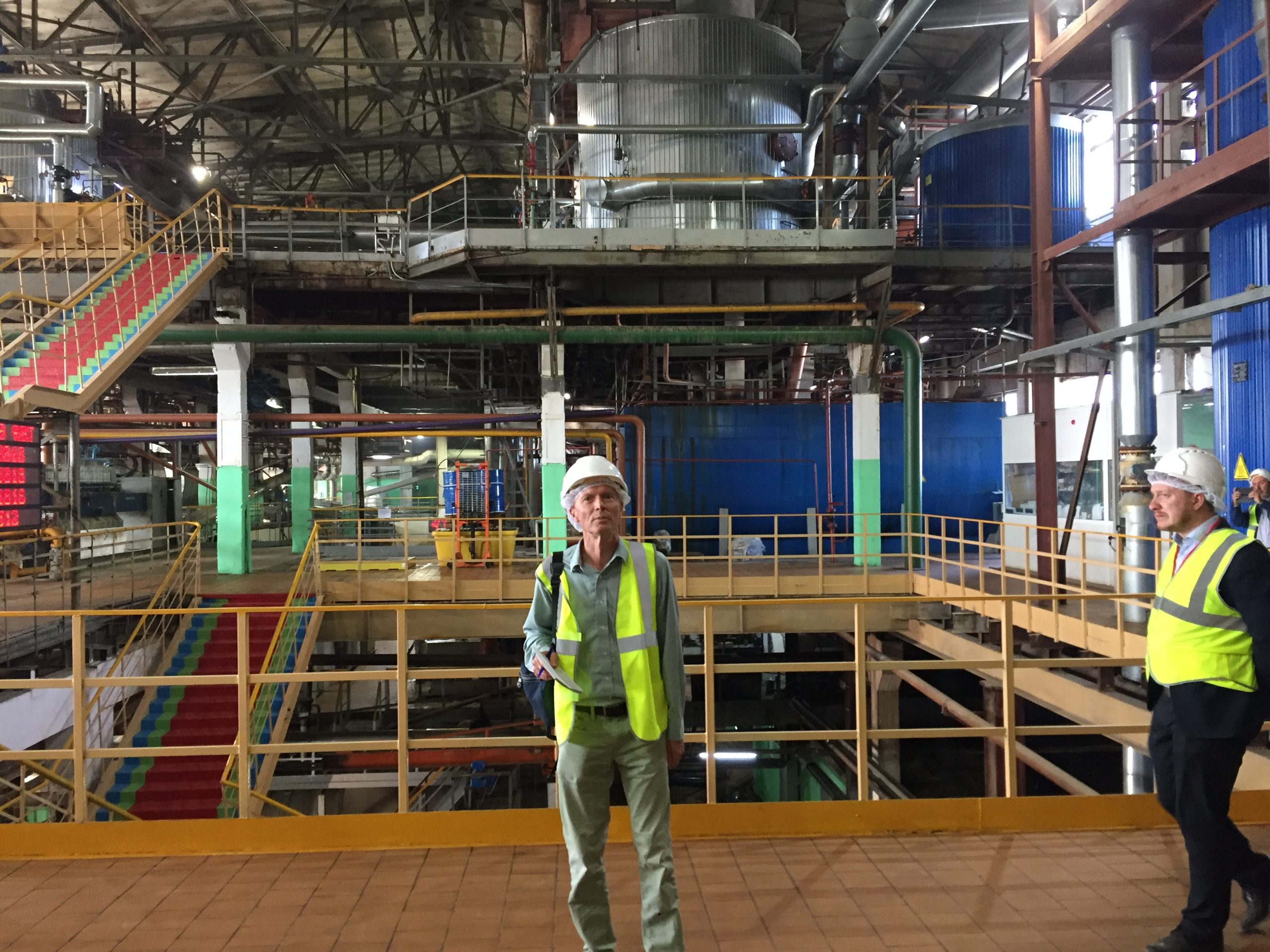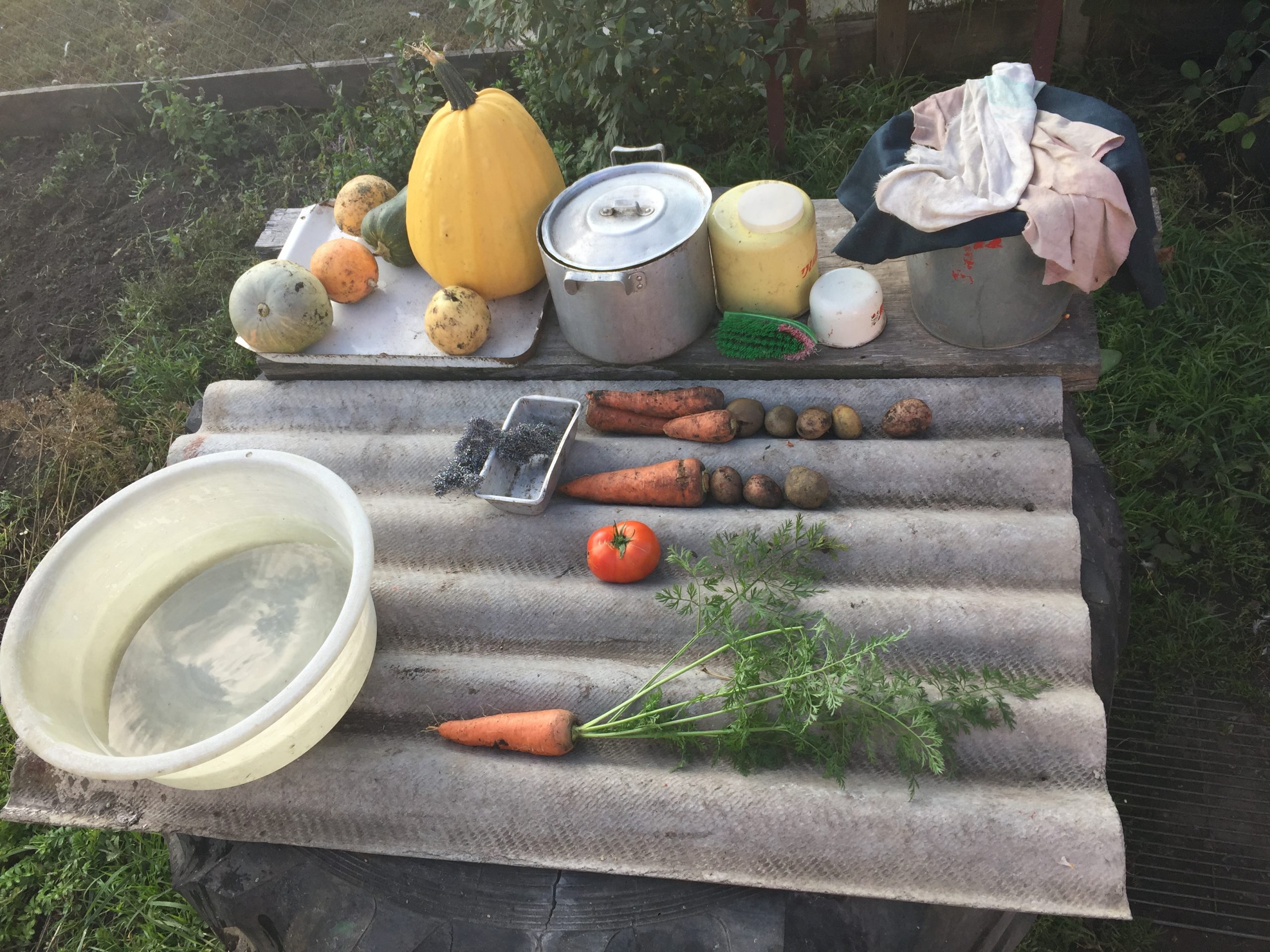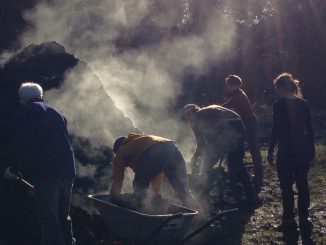
by Alia Yakupova & Hannes Lorenzen
Part 2 of our Russia series aims to shed a light on the Russian agricultural industry and changes that lie ahead. Alia Yakupova and Hannes Lorenzen walk us through a brief history of Russia and the potential impact of recent developments on global agriculture and food.
Food commodity exports are now worth more to Russia than its arms shipments, earning the country some $25 billion in 2019. Russian fields produce 10-13% of the world’s total grain exports and 20-23% of global wheat exports. Yet, due to the fact that the food processing industry remains greatly underdeveloped, Russia has to import most of its refined food.
Russia now faces an important strategic choice. In the light of potential growing opportunities as well as certain external factors that are expected to influence the global agricultural industry in the coming years, will it focus on exploiting more land for crop production — and as a result increase its exports and become an important part of the global agricultural chain — or will it work on improving its food processing industry for the purpose of becoming more independent from the global agricultural beasts? One thing is for sure, there are some important decisions as well as development to be expected from the Russian agricultural industry.

Opening up Russian agriculture
Two centuries of fluctuations
Russia, with its vast land mass, went through a number of fluctuations during the 19th and 20th centuries. Despite having a greater population than the rest of Europe at a time, most of which lived in rural agricultural communities, Russia could not compete in terms of its industrial and economic development. Still, while its European neighbours and the Free Economic Society were dedicated to improving their farming techniques, Russia managed to become one of the largest crop exporters, especially wheat (36% of total exports in 1910), despite its agricultural inefficiency.
Later, Czar Alexander II’s freeing of the serfs in the mid-19th century, the consequent Great Siberian Migration and agriculture-oriented Stolypin Reforms, opened up an opportunity for cropland expansions. Yet the socio-political disturbances that followed shortly after (World War I, the Bolshevik Revolution, the Civil War, and later World War II) prevented the Russian agricultural sector from seizing the opportunity.
As the situation became more stable in the 1950s, the Soviet government enacted the ‘Virgin Lands’ campaign. In the decade that followed, 13.6 mha of land was ploughed in Asian Russia alone, demonstrating the country’s massive potential in terms of agricultural production. Yet, there was another watershed moment around the corner that was about to shake this positive trend – the dissolution of the Soviet Union in 1991 and disintegration of the state-command economy. Subsequently in the 1990s most cropland and managed grassland was abandoned. Cropland acreage and livestock numbers have not recovered to pre-1991 levels (according to Federal State Statistics Service figures from 2016).
21st century modernisation
Over the past two decades, Russian agriculture has undergone an intensive modernisation process. This was underpinned by developing macroeconomic factors, among which increased integration into international trade, expanded technology transfer and foreign agricultural investments, as well as the necessity to increase production safety and efficiency.
The development of technical equipment was at the frontline of the modernisation process, since it directly affected the scope of production as well as the efficiency of human capital employed. For instance, in 2014, under a government project to accelerate the country’s agricultural performance, 15% subsidies were offered to agricultural producers in order for them to purchase appropriate technical equipment. This would broaden in 2017, when the total cost of the State Program increased by 2.6% percent.
The second main pillar of the agricultural modernisation process was the adoption of new policies better suited to developing industry and the age of globalisation. Increasing concerns regarding import dependency in the late 2000s prompted a policy focus on stimulating domestic food supplies. Governmental support was measured by the OECD as 22% Producer Support Estimate in 2008-10, which was higher than the level of the support provided in the EU. While such tightening of governmental assistance was related to, among others, the global economic crisis in 2009 as well as local droughts, it also signifies the long-term orientation favouring production growth and import substitution.
Yet, the Russian agricultural sector still observed deficiencies that were not being tackled. In particular, considering the amount of land resources in Russia, its agricultural sector requires advanced service and transport infrastructure like no other place. Moreover, public water and land management systems are also important to the efficiency of agricultural production. However, an inadequate level of investment, R&D, and innovation causes Russia’s lagging performance in the global arena.
The race to ramp up production – at what cost?
While becoming part of the global agricultural economy implied expanding technology transfer and foreign agricultural investments, Russia started to import seeds, livestock and Western farm machinery. While these imports were opening up new market opportunities, it was to be expected that producers would respond to them for the purpose of improving the efficiency of their operations.
The import of hybrid corn seed from the West (mainly France and Hungary) at first glance produced some favourable outcomes. From 2002 Russian imports of the hybrid corn seed increased by 84% to reach 36,820 tons in 2015, 50% of which was used for planning the same year according to the Global Trade Atlas (2016). Russian corn yields increased by almost 50% during the same period reaching 4.93 tons per hectare in 2015.
However, such seeds consistently provide the expected uniform characteristics and high yield performance only during the first harvest. Therefore, while they can greatly contribute to a dramatic rise in agricultural output, especially during the second half of the 20th century, hybrid seeds cause increased dependence on seed imports, making them a weak long-term solution from the global dominance point of view.
Moreover, substantial agro-biodiversity loss and increased susceptibility to disease and weather conditions is another potential global consequence of being dependent on the import of hybrid seed. While the goal of a farm, in contrast to natural ecosystems, is to produce a harvestable product, agricultural intensification and monocultural systems have already noticeably decreased biodiversity on farms. This decreases long-term agricultural sustainability. The preservation of agro-biodiversity provides important ecosystem services and therefore should become a priority within the agriculture industry. In fact, the Russian government has already mentioned it as one of the focus points in the future development of the country’s agriculture (to be discussed in part 3).

The business of farming
Agroholdings
Global food consumption and production created a surge of global money into agriculture, causing the appearance of a different type of agricultural enterprise in Russia – agroholdings. These enterprises acquire existing corporate farms and vertically integrate them, combining primary production, processing, distribution, and sometimes retail sales. Such a vertical structure helped them to reduce costs caused by the market and infrastructural deficiencies faced by Russian farms.
Although some experts claim that, on the contrary, the large size of agroholdings causes them to suffer from diseconomies of scale, it is clear that these vast, vertically integrated producers have a strong presence in Russia, especially the South district. For instance, agro-holdings have been the driving force behind Russia’s booming poultry industry, with the broiler output rising from 0.41 to 3.01 million tons between the years 2000 and 2013. The area of land owned by the 56 biggest agro-holdings in Russia doubled between 2007 and 2019. The Federal State Statistics Service (Rosstat) also notes a stable trend in agricultural production – numbers almost tripled over the same period.
New entrants
Apart from agricultural enterprises, Russia does offer a good platform for individual farmers. The country’s inexpensive and fertile land attracts not only Russian but also foreign farmers. Although there are high barriers of entry to be able to compete with the biggest agricultural enterprises, as consultancy firm BEFL reported in 2019, Russia’s excess of resources and growing demand offer numerous opportunities for a small-sized agricultural organisation. Moreover, there are multiple sources of governmental help to assist local as well as foreign agricultural producers. Beginning in 2017, start-up farms have the right to apply for subsidies and, if approved, some state assistance is provided. There is also the “Beginning Farmer” program, which allows qualified parties to receive a grant for developing their own agricultural businesses.
In other words, there are growing opportunities for farmers in Russia. As such some 9,200 loans were granted to small- and mid-sized agricultural businesses in 2016, accounting for RUB 191.5 billion.
On the other hand, Russia’s infrastructure is underdeveloped. Moreover, one should not forget about the absence of qualified and diligent workers. Lastly, land is one of the biggest sources of profit for governmental officials, meaning that unless agricultural businesses or producers deliver that, they may also meet obstacles on the way.

Trade and geopolitics
Sanctions and ambitions
Under the sanctions regime, Russia managed to meet its food security target by consuming only 20% of the whole production volume of core cluster products, leading to the necessity to boost exports. As such, in 2017 Russia generated USD 20.7 billion in exports followed by President Putin’s announcement of Russia’s new ambition: USD 45 billion of food exports by 2024.
Now, such growth of the Russian agricultural sector, despite geopolitical challenges, triggers a wave of interest among foreign international investors, who recognise the untapped potential of the Russian agricultural sector in the light of current environmental changes. Thus, while there was a year-on-year decrease in investment by foreign companies in 2017, that same year China increased its investment in Russia by 3.5 times compared to 2016. In other words, those who count on the global integration of Russia in the global agri-food chain could and will benefit, not only delivering value to their shareholders but also advantages for global consumers (i.e. food production increase and diversification of global supply).
Still, President Putin’s new ambitions imply that the country’s annual export is to increase by 12% a year for the next four years. While some researchers argue that such a goal is not realistic, it is worth mentioning that Russia’s current export performance is rather small for a country of this size, land mass and agricultural potential. Russia has been neglecting the abundance of its natural resources (the country is ranked world’s 2nd inefficient with its arable land, and 5th with its farmland plots). Moreover average crop yields are poor, as is the availability of suitable agricultural technologies (i.e. machinery fleet and skilled labour, modern storage facilities and infrastructure).
Tapping into trade
Russian agriculture has much untapped potential – if only productivity and efficiency can be increased. Most of Russia’s agricultural activities are located in the European part of Russia (before the Ural Mountains). Meanwhile very little is known in the West about the historic agricultural development of the Asian part of Russia, which covers approximately 77% of the Russian territory or 13 million km2. Russia’s Asian portion, if taken alone, is the largest country on earth by a wide margin, yet it is home to only one-third of Russia’s cultivated croplands (Rosstat, 2016). Thus, while geopolitical risks have their negative impact, there are plenty of reasons for international food companies to start new projects in Russia. As such, several major foreign companies are continuing to strengthen their positions in Russia, including Louis Dreyfus, Cargill, CP Foods and NCH Capital.
Moreover, regarding climate change, temperature increases and extreme weather events may expand the area of land suited to crops and livestock production. In other words, Russia has huge potential to become a leader in organic farming: 10 million ha of arable Russian land is still idle (more on this in part 3 of the series). Meanwhile, Europe has already depleted its arable resources.
Thus, the Russian government has begun taking steps to start to unlock Russia’s potential within the global industry. As such, major plans to accelerate growth of non-resource exports and its intention to support this business were announced. Moreover, the Ministry of Agriculture is developing export support programs that are to be sponsored by the government, such as capital expenditures recovery, concessional financing, subsidizing of logistics costs and implementation of joint investment projects with businesses. The Russian Export Center offers a wide range of services to promote Russian goods in cross-border markets.
Conclusion
From a business standpoint, there are favourable conditions for producers and exporters of Russian food commodities. From an environmental point of view, the resources Russia possesses offer opportunities for sustainable agriculture that could be helpful to the world at large in the near future. While both are a promising sign that Russia will take a worthy place among global food suppliers in the near future, the balance between the two, and the preferred focus on sustainability is what we should aim for.
More on Russia
Moldova: East or West, Capitalism Defines its Socio-Economic Terrain





